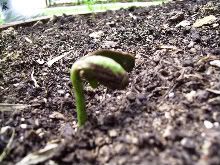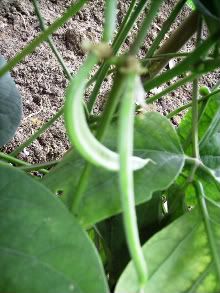How To Soar in PSLE - BTPS Way!!
Interact with complex questions / graphs / pictures to pick up valuable clues (don't highlight - just use your pen to underline words or scribble notes)
Start with Booklet A and do it meticulously with full focus - explore all 4 distractors before making final choice.
MANAGE your TIME - to score well, you need to try to finish ALL questions.
Specific answers = answers that are relevant to question.
When confused, choose any of the following strategies:
1. Ask, "What Science idea is being used in question?"
2. Pose other questions to clarify your thoughts
3. COMPARE to another set-up
4. COMPARE to a reverse situation
5. Connect to your knowledge in life (yes, you do have lots of prior / other knowledge)
6. Break down your answer in steps before crafting final answer.
Common problems with wrong answers:
*Answers are generic/vague and do not connect to that specific question
*Answers are not scientific and do not explain using Science ideas
*Answers do not make use of data provided when asked
*Answers did not make comparisons - use words like more/most etc..when asked
BTPS supports all P6 in achieving their PSLE GOALS!!
Chapter 15, pg 130

"The birds were everywhere, five and six in a flock, and their camouflage was so perfect that it was possible for Brian to sit and rest...."
Q7) Describe two behavioural adaptations the foolbird displayed in order to escape from predators.
Q8) In what other way could one of these above behavioural adaptations help the foolbird?
Science Around Me (SAM)
SAM is a Science journal that allows pupils to express themselves in their favourite ways about Science.
SAM is another great opportunity for pupils to THINK and TALK Science in a medium that is customised to their learning styles.
SAM allows teachers to informally assess understanding of the child and clarify misconceptions in their learning.
When Ice Changes into Water by Goh Chee Yan - 5G
Do you wonder whether the mass of ice changes when it melts into water. Try this out:
1. Put a few ice cubes into a plastic bag
2. Tie the mouth of the bag tightly
3. Weigh the bag of ice cubes (if there is condensation outside the bag, wipe it dry before weighing)
4. Place the bag in the sun
5. When ice has melted, wipe the outside of the bag dry (refer to step 3)
6. Weigh the bag
You will discover that the mass of the bag remains the same!
There is no change in mass when ice melts!!









34 comments:
The two behavioural adaptations of the Foolbirds to escape from their predators were Firstly,they can fly fast and away from their predator quicky...and Secondly,they stood so perfectly still and blended in to the surroundings so perfectly well as well...thats what i think about it...ps if i am wrong...
By:Douglas Yeo
6Faith
Q7 )
Behavioural adaptations :
-They move in a flock , hence when one of them get caught/shot , others can get alert and move away from the area as fast as possible.
-They stay in areas of dark colour (brown),usually with branches , twigs etc , so that they can blend into the colour of the surroundings with their body colour ( brown ) . Hence , they can camouflage & avoid being caught .
Q8 )
When they flock together , if one of the birds finds any food , the others can also follow to the same location to get food / the food can be shared among them so that they will not starve.
( the above is of my own opinion )
Gu Yuling 6Chairty
Youn Yea Won Ellia (6C)
Introduction of fool birds-
They are known for their stupidity. They can forget anything in 15 minutes.
Some of their behavioural adaptations (Q7):
-They move in a flock. Usually, when animals are hunting, those in group alert themselves by crying or even leading the group hurriedly. This prevents them from getting killed easily.
-When the birds fly, they make a deafening sound which can easily scare the predators because even Brian jumped and jerked in fright. If humans with mature mind get frightened, that means to say most of the animals will also be frightened. If none of their predators get frightened by the exploding kind of sound, what for will they make that kind of deafening sound?
-They stay in areas where they can camouflage. They stay in areas where there are branches, twigs and other brown coloured woods. This is because as you can see from the picture, their feather pattern looks like the woods. They blend with this nature and these facts help them to prevent themselves from being caught and also camouflage.
Q8) Animals which flock together share the information or whatever things they have found but I am not sure if this will help because they have very very short memory.
The camouflaging part can help them blend with the nature, decreasing the chances of them being caught by the predators. This increases the bird's chances of survival.
I am sorry if there is any false statement.
Just with that picture, I can see that it can fly fast (Aerodynamics remember) and it can blend very well int the surroundings.
Next, it must move in flocks so that the predator will be confus e for which one to target.
P.S. I am very very sleepy, I will try to add more details later
The two behavioural adaptations are:
1.Camouflage.Their body covering is brown so if they want to evade their prey, they just need to perch on a twig that is the same colour as them.
2.They stay in a flock and that benefits them as they are known for being stupid. Anyway, if one of them spots danger, he can inform the rest and thay could fly off like a feathered bomb,thus increasing their chances of survival. And if thay really did not notice the predator and only realised when the predator was really near, they can confuse the predator into thinking "which one to eat?"
Starfire is Yi Rui. sorry.
7)they fly in a flock so the predators do not know which to chase when hunting for prey.and they stood really still and blend in with the surrounding perfectly.
8)they stay in flocks so if anyone of the foolbirds get caught or anything,the rest can flee and reproduce.so they will not go extinct.
tan siqi(6G)
Q7)They can blend in with the colours of their surroundings which is the trunks of the trees which makes them hard to find. Another is they fly in flocks. Flying in flocks is safer than flying alone as when one finds food or when one gets preyed, others will be alerted and knows what to do.
Wu Xinyi 6G
Q7)
Behavioural Adaptions:
1. They could have display certain behaviour to help them escape from predators.
2. They could have blended in with the surroundings because of the colour of their feathers, allowing them not to be noticed easily.
3. As they were in a group,they would be able to spot the predator coming and would have have time to warn the others and escape.
JJ (6C).
Behavioral adaptations:
>They fly in flocks so when their predator(s) try to catch them, they/it might be outnumbered by the number of foolbirds in a flock.
>Because of their unique body size and colour, they are perfect for camouflaging. They look like a pear (to me) so the predator might mistake them as food. Plus, their body colour is brown, so they might be safe if they stay in places near twigs, tree trunks,etc and stay very still.
-In a flock, if one of the foolbirds sense danger, the others will be alerted. And, if one of them gets attacked, the others can have time to escape.
Si Jia
6 Grace
Q7)The two behavioural adaptations of the Foolbirds are:
They fly in flocks so that they can help each other to look for foods and keep a look out for predators.
They also blend into their surrounding like tiwgs,brunches,and so on they keep very still in order to escape from predators
Q8)they fly in flock to look for food (leaves, berries, stems, and seeds)and to also to have more pairs of eyes to look out for predators increase the chance of survivals
hansheng (6Grace)
The ruffed grouse is a brownish colored bird. This bird has long, shiny, black or chocolate colored neck feathers. It is a little larger than a pigeon at about 14 inches in length. Its tail feathers are fan shaped and are over 5 to 8 inches in length. Its wings are round like a chickens. At the top of its head is a crest. The ruffed grouse gets its name from the ruffs on the side of its neck. Its head, neck and back are brown or gray. Its breast is a whitish with brown and black bars and chevrons.
1.Temperature
It may tuck its bill under feathers of its back or wing, draw one leg into its feathers, or fluff its feathers to trap a larger volume of air.It my stay in the sun and position its body to maximize heat absorption or remain in areas sheltered from the wind
2. They can camouflage in the surrondings as they usually lives in wooded area and it also builds a shelter in a shallow depression lined with leaves so it can camouflage in there too.
Sorry, above comment by me. MArcus Chioh
The two behavioural adaptations are that they stay in brown areas so that they can camouflage and the other is that they stay in flocks so that they can alert others if one is prey jia de 6g
behavioral adaptations of foolbirds:
-Camouflaging
They blend their colour of their body covering in order it would be the same as the surroundings
- Flying in flocks
When any of the birds spot a predator, they can inform each other to beware of them.
Ying Xuan (6Faith)
I think the two behavioral adaptations of the fool bird is...
1)they move in flock so when they saw predators ,they can inform one another and fly away imediately also when they are together, they can find food together too !
2)they also can camouflage (blend into the surroundings so well)that also help them a lot in finding food why ? That is because while they are finding their food , they do not need to be scared of predators .
(in conclusion i guess we should'nt call them fool birds as they are so good in teamwork . I think. hehe)
by:liping :)
6Grace
Q7)1.Foolbirds fly in places that the colour of their feather will blend into the surrounding to let the predator find it hard to spot them.Making the predator feel confused and encouraging them to give up hunting for them.2.They fly in flocks to protect from predators,communications,reproduction or maybe for flight directions.
Q8)They fly in flocks so that they can communicate with each other.If one of them got caught,the rest will know that there is danger near-by and will escape that place to have chance to reproduce and prevent it's kind to be extinct.Flying in flocks also help in the direction for food-if one of them found food the rest would know where they could get their food~audrey 6grace
Q7. The birds fly in a group so that the predator would have difficulties in catching them.the birds also camouflage and get to fool the predators.
Q8. it helps the foolbird to survive and reproduce so that its species would not be extinct.
~Syafiqah 6Grace
The birds keep still to not attract any attention to them and makes any enemies think that they are actually looking at something else instead of the birds. The birds also move about in groups instead of moving about individually because when blending in,the individual bird will be the odd thing out and enemies will know and attack the bird. Timothy
They two behavioural adaptations are they move in flocks so that they can help each other like for example, they are in danger from a prey, they can alert each other and escape quickly from the predator. When one of them finds food, it can inform the rest of them. So the will normally have enough supplies of food. The foolbirds can also blend themselves in the surroundings especially in brown areas as their skin colour is also brown. And because of that, they can easily prevent themselves from getting caught as prey by their predator.
(both questions are answered inside)
Remus see
The foolbird stays in a group because predators find it more challenging to attack an animal in a group. It also find a place where the colour and its colour is the same so that their predator is not able to spot them easily
that was mine (shanice yeo 6g) ;P
When the foolbird knows that there is a predator coming ,they will quickly fly away or camoflodge within the fallen branches and twigs
they would call out to the other foolbirds to alert them that a predator is coming and would fly away in flocks to make them look like a larger animal
tobias lee 6 hope
Q7) It can able to camouflage and escape from their predators by flying.
Q8) A)When the foolbird spot a predator, it will hide itself among the branches and twigs.
B) Foolbirds move in a flock to make them look like a large animals. Hence, it will scare off the predator
Sylvia 6 Joy :)
The predator knows that if the foolbirds are together is harder to catch more birds because if the predator catches 1 bird, others will be alarmed and will fly away to a safe place or attack the predator so in the end the predator only catches 1 or not even 1 bird,so, the birds stay together ,is to trick the predator to not use the catching method and use other method.If the predator uses other method like shoting is even harder as when the predator shots the first time,it may not shot the bird and they can escape away...
The foolbird uses its camouflage to trick the predator ,so when the predator catches the a branch instate of the foolbirds, the foolbirds will be again alarmed and fly away.i think another method for the foolbirds to get fooled is when the predator is looking carefully at the ground to check if it spotted the right target , it also gives time for all the foolbirds to escape, and when they escape, all will fly out and the predator wil protect itself as predator has behavioural adaptations too .so when the predator reacts by closing the eyes, covering itself... ,the rest of the bird uses the time to escape danger.
Lydia Ng(6 grace)
They move in a flock and land on surroundings that has a same colour as them.
Lim Zhi xiang
6Grace
If they move alone their predator could just concentrate on it with out any disconcentration and could be caught more easilybut if they fly in a flock they can disconcentrate their predator
Lim Zhi xiang
Joy Peh |6c,
1)Based on the book, foolbirds like to hide in hazelnut bushes. Upon looking at the picture given, it is probably to camouflage itself. Please correct me if this is not a behavioural adaptation.
2)They stay in a flock and that benefits them as they are forgetful. If one spots danger, it can inform the rest and they could escape danger,therefore increasing their chances of survival. This confuses the predator into choosing which one to chase.
(Opt2) I suppose that it will be easier for them to find food.
Sorry for false opinions...
Cha Da Eun (6c)
sorry about the top. l accidently pressed 'enter'. Adaptations of foolbirds are : They have different shades of brown feathers covering their bodies so they can blend in to the surroundings.Secondly,they move in a flock which 'confuse' the predator and do not now which one to catch. (like what Sean said)
Cha Da Eun (6c)
The foolbirds could camouflage itself by sitting on the same colour branch as its outer covering.The foolbirds move in flocks so when one of them sensed danger,the whole flock of foolbirds will escape.
Chua Qin En
6Faith
Q7)Some behavioral adaptations include:
-Ruffled grouse(pardon me,foolbirds)spend most of their time on the ground, hunting for food. When surprised, they may explode into flight, beating their wings very loudly and scaring off predators.{As shown in the book, Brian frightened by the explosion on the foolbirds even though he had seen it many times.}
-They move in a flock, so if one of them gets shot of injured, the rest could get the message and fly out of harm's way ASAP(as soon as possible)
Q8)Moving in a flock may help them as in which one of them found food, the whole flock could fly to the food and enjoy it together.That is if there is no predator.
~Nicholas King(6C)
Post a Comment